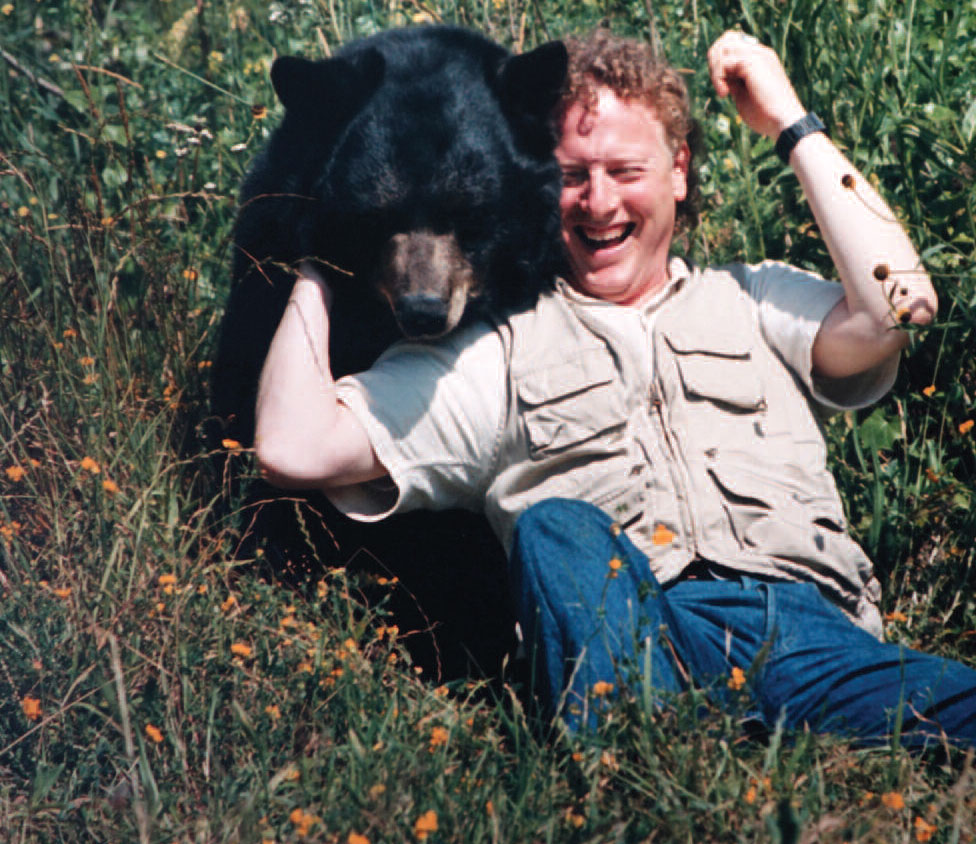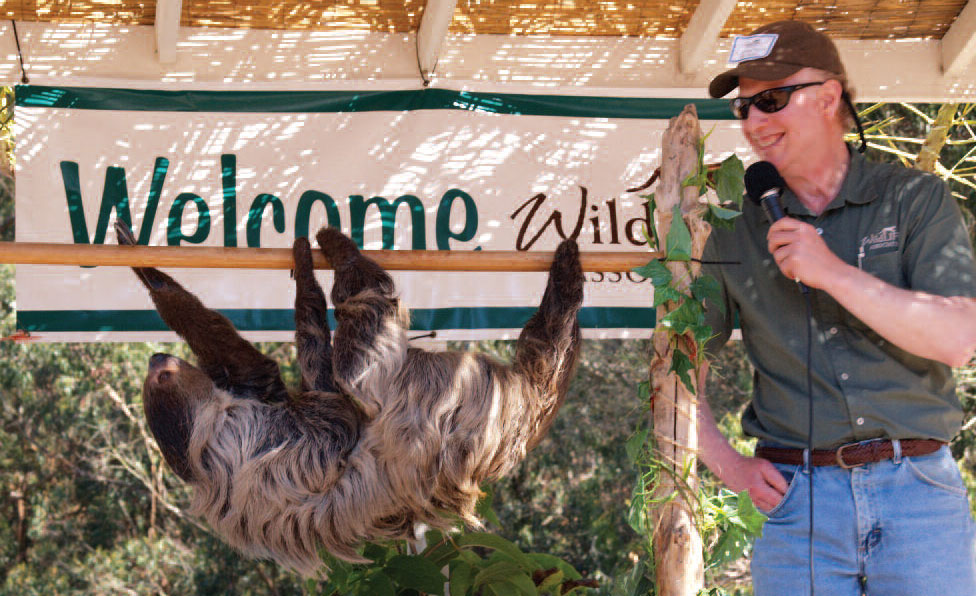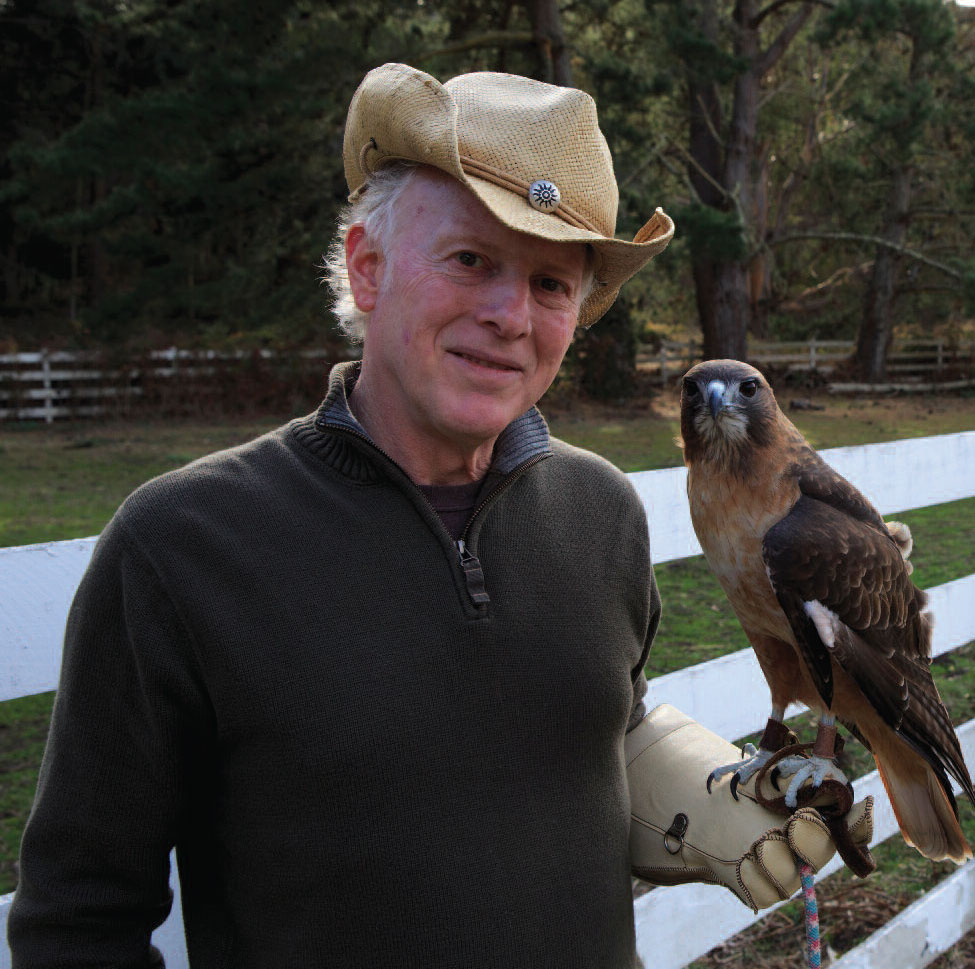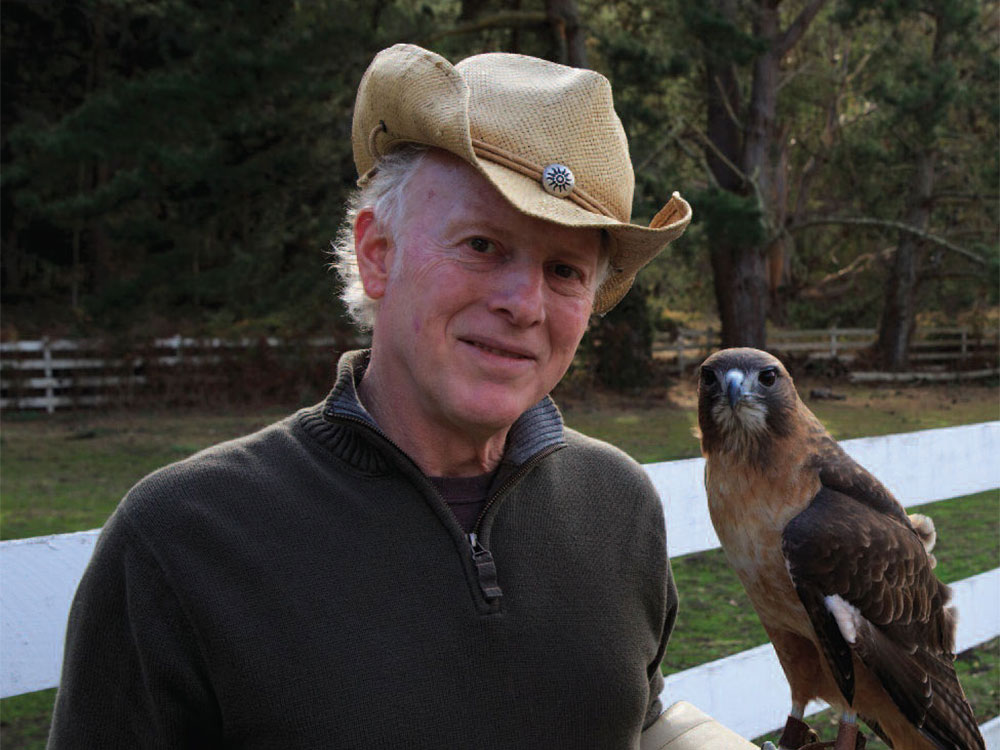A conversation with wildlife educator Steve Karlin
In 1980 Steve Karlin, a former National Parks Service ranger, founded Wildlife Associates, dedicated to educating people about animals and the environment. Now situated on 120 acres on the coast of northern California, Wildlife Associates provides a home for more than fifty wild animals who are no longer equipped to survive in the wild, and brings educational programs to about 100,000 students in the San Francisco Bay Area each year.
Recently filmmakers Anne Veh and Rajesh Krishnan made a film, Teach Me to Be Wild, about Wildlife Associates and Steve Karlin. During groundwork for the film, filmmaker and photographer Phil Borges interviewed Karlin. What’s below is an abridged version of that interview.
–The Editors

Steve Karlin: As I’m talking to you now and you’re talking to me, out of my right ear I can hear gophers in the ground eating roots and chewing through the ground and pushing dirt up.
Phil Borges: You can hear that?
SK: I hear that as I’m talking to you. I was concentrating on what you were saying, but I was also hearing that. At the same time, I’m hearing the birds chirping behind me, and the chirps are moving, so I can tell the birds are moving around. I can hear one of my birds of prey making a squeal because one of the people she knows is walking by, probably cleaning the enclosure….
PB: So where did you get this affinity for animals? When did it come into your life?
SK: Behind my house in Cleveland, Ohio, was a lot. I lived in the suburbs, where everything is lined up, and the houses were built in the early 1900s. And there was a field behind my house, and when I was a kid, that field was my world. I knew every raccoon that walked through there, every possum, every owl that lived, the hawks that came by, the birds….
PB: Did you name them?
SK: I named them all. The ladybugs: I was met by ladybugs on my way to school every day at the same place. In my head, it was the same ladybug, but it could have been a whole bunch of different ladybugs. It landed on my hand, and I talked to it. I would leave to go to school five minutes early, so I could talk to this ladybug, and I would say, “Okay, go away. I’ll see you after school.” Sure enough, after school, there were thousands of ladybugs in this one area. One after another, they were landing on my hand. It was a very magical experience for me.
And then I became friends with these two robins in the backyard. The robins would fly around, and I was always playing out there. So you know how birds are; they get used to certain people, and they let you get kind of close. Then I saw them building a nest, so every day I’d get closer to the tree. I climbed the tree a couple of feet one day, and then a couple of feet the next day. It got to the point where I was sitting on a branch next to the nest that they were building. I was hanging upside down, next to the branch above that nest, when I saw eggs being laid. I was in third grade; I didn’t know anything about biology really. And they were sitting on the eggs.

PB: So, it just came to you naturally?
SK: Yeah, I just became a part of this robin family. Then one day, I came home from school really excited, wanting to see the baby robins that had hatched out of the eggs. And a few days later, I wanted to see how big they were getting, when I heard this noise—this big, rumbling thing with clanking metal, with black soot coming out of the top. And I thought, “What’s going on?” A bulldozer was digging up the property and flattening it out, so they could build a house. They had already knocked down the tree. The robins were flying around, screaming. And the babies were dead on the ground, crushed…. And I stood in front of that huge bulldozer with this guy sitting in the seat….
I was crying and screaming at the guy, “You killed my family!” And he goes, “What are you talking about?” I said, “These birds were my family; you killed them. How can you do that?” And I made an oath at that point in my life, in third grade. I said that no matter what happens in my life, I have to make sure people understand they can’t treat creatures like this. We are all connected…. My greatest mentors were those robins. And my greatest love was a bear, Susie Bear, 330 pounds.
PB: A bear in Ohio?
SK: No, here in California. She was in Grizzly Adams and The Wilderness Family. She was retired and came to the sanctuary before we had this one. Susie Bear’s parents were killed by poachers, and she was chased off a cliff and taken to a rehab center. And this lady took care of her and used her in the motion-picture industry. … Susie Bear was a bear that just sat there and ate food and left everybody alone. So they put expensive actors next to Susie Bear and didn’t have to worry about people getting hurt. And she was pretty smart; she was sweet, and she came to live with us.
So I had a love affair with a wonderfully beautiful, amazing, intelligent being who people know as a black bear, but I know as Susie Bear. She taught me every day. She taught me about being a human and how to be there, how to be who you are and stand your ground. Because when a 330-pound bear is coming at you angry—if I were to run out of the enclosure, well, I would not be able to get back in because she would say, “Okay, I got you. You are not willing to stand there with me.” So I had to stand there with her.
PB: Did she charge you like that?
SK: The first time I went into the enclosure with her, she stood up on her hind legs and was going [bear gesture], which in bear language is, “You are out of here, buddy.” Maybe not out of this cage but out of your life! So, I walked toward her yelling, “No! No! No!” And she kept yelling. And then, with my open hand, I hit her on the nose. Then I started thinking, “Oh my God, she is going to kill me now.” And this is a 330-pound bear, but she sat down next to me and said, “Okay, you’ll do. If you are willing to sit here and argue with me, if you are willing to sit here and go through the rough patches, willing to sit here and be with me and be strong enough to hold your position with me, we can have a relationship; we can be friends.” And so she was testing me, but she was always very sweet about it.
PB: Really?! I assume you’ve seen the Werner Herzog picture, Grizzly Man?
SK: Right. This is not a grizzly bear; this is a black bear.
PB: So a whole different personality?
SK: Grizzly bears eat you. Black bears pretty much leave people alone. In a captive situation, you really have to know what you are doing with them. You have to know how they communicate. We would go on walks together in the forest and just sit there. She would put her arm around my shoulder and put her head on my shoulder and lick me in the face, and then she would lie on her back….
She developed breast cancer, and we removed it. But a year later, it metastasized throughout her bones, and she passed on.

PB: Let me talk to you a little about…you’ve got Parkinson’s.
SK: When I’m talking, I’m trying to be in my place in the center. Now, I’m aware of all my shaking going on. But when I’m trying to communicate, I’m not aware of it at that point…. It just really keeps reminding me that I have to be reflective of what’s really going on and who I am as a human being. Am I a shell that’s shaking? To some people, yes; to most people, yes. To me, it’s the being inside: all the stories, all the experiences wrapped around that core spark of existence.
PB: So, for you, it is just a reminder that we really aren’t in control?
SK: Yes, and that we have to stop spending our lives trying to be in control. I’m not saying don’t be a powerful person and do wonderful things in this world, instead, just lie there and be a schmuck in the middle of a forest. But realize that we are only on this planet for a very short period of time. We are not this shell. This is the story we have made up in our minds, of who we are. Because, beyond all of our personality, there is something in here that is connected with everything in existence on this planet, and if we can become aware and conscious and part of that…. And this is why people do meditative practices; there is such an experience of oneness that you can’t put into words. It’s the language before words, the language after words; it’s the language of existence. And to be experiencing that oneness of all living things is the epitome of being a human being.
The indigenous cultures, they have all these stories about spirits of the forest, spirits of the trees. How else can you relate it? You can’t put it into words. So, you have this incredible experience with trees and forests and this connection when you know certain tree saps save your life. … If you are living in the forest, and that tree saved your aunt, and you made something out of this flower, and it saved your mother, those trees are holy; those trees are sacred. They are sacred because they have such an affinity, such a relationship with you. So how should we treat that flower, if it saved our relative, a human being?
PB: With a lot of reverence.
SK: Yeah! How should we treat the forest that provides a carbon sink and oxygen, and plankton that provides all this green algae? All this stuff is sacred because of our relationship with it—it keeps us alive.…
I was telling somebody who brought me food the other day that they had cooked, that it is the most intimate experience, the most intimate gift, to give someone something you cooked. Because when you eat something, it becomes part of who you are. It goes into every cell of your body. It changes you forever. So when you cook things for people, it’s a very intimate experience, more than making love to them…. And it reminds me of my aunts who used to have a string of bakeries, and they used to bring baked goods home for us. And my grandmother lived in the house with extended family and would cook for us. We revered our aunts and grandparents so much because of the love they put into nourishment to keep us alive, and how it related to everything around us; everything is sacred.
PB: Give me in a short sentence, if it’s possible…what have you found to be the most effective way of getting in touch with that feeling of oneness with everything?
SK: Start with your breath: Our first breath in life, our first breath in existence, we breathe in; our last breath, we breathe out. Those are the two most important breaths that we have. One brings us into this world; one takes us out of this world. And almost every other breath we forget, we are not conscious of. And if we start just listening to that breath, in and out, up and down, just listening to the power and how it feels, that’s the key to the consciousness and awareness of all living things around you. If you’re sitting in a forest, and you just listen to your breath [takes a breath]. The instant I did that I heard what I wasn’t hearing before—five to fifteen songbirds around me. I smelled the grass I wasn’t smelling the whole time we were talking. I felt the humidity in the air. I felt the wind blowing against my face. I felt more alive. And if we continually just become more aware of our breath, things will magically shift for us. It’s a good start. ♦
For more information about Wildlife Associates, please visit wildlifeassociates.org. For more information about the film Teach Me to Be Wild, please visit teachmetobewild.com.
From Parabola Volume 42, No. 3, “The Sacred,” Fall 2017. This issue is available to purchase here. If you have enjoyed this piece, consider subscribing.
